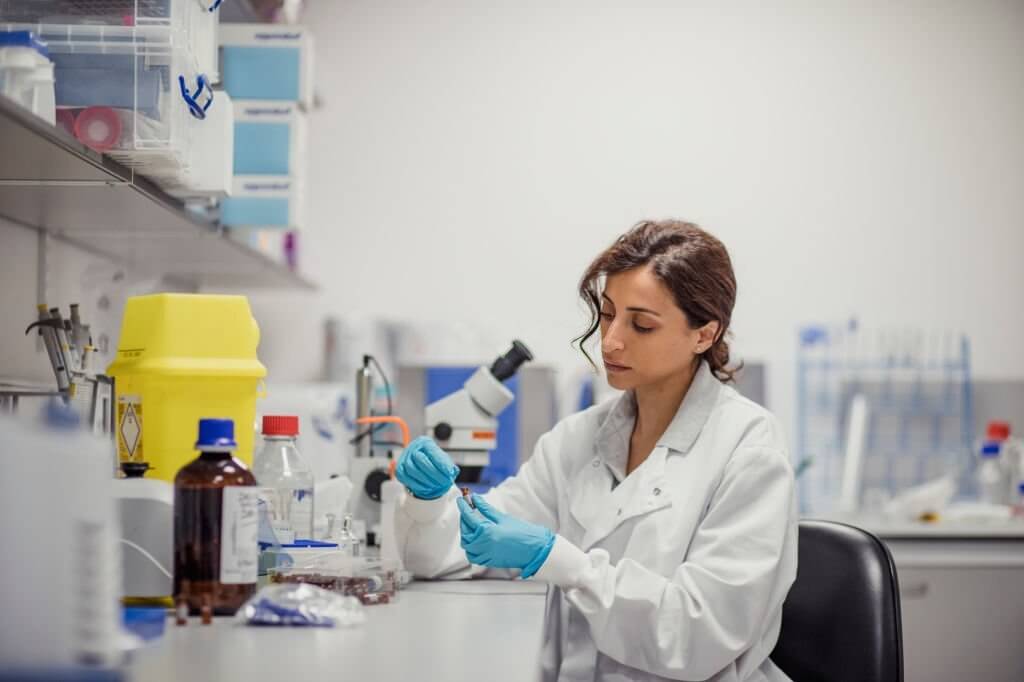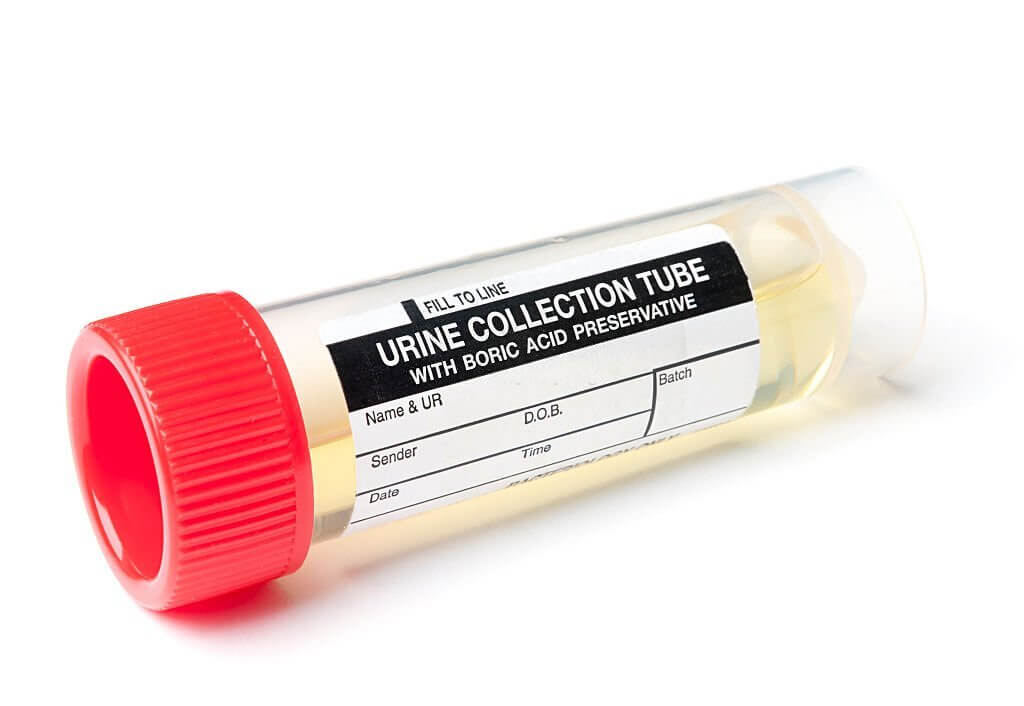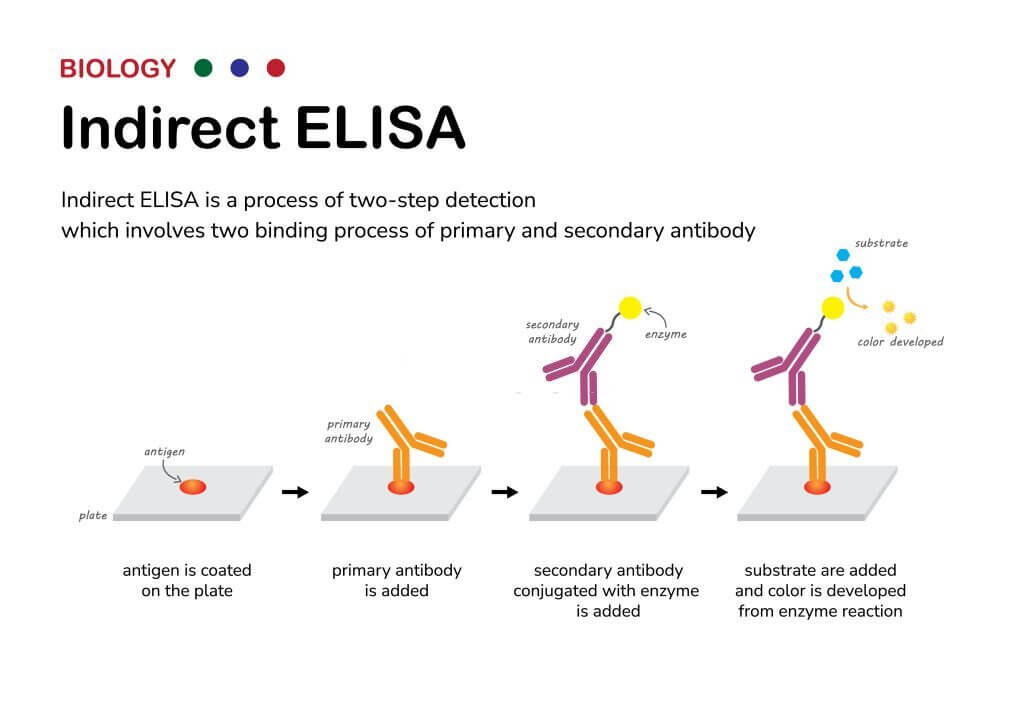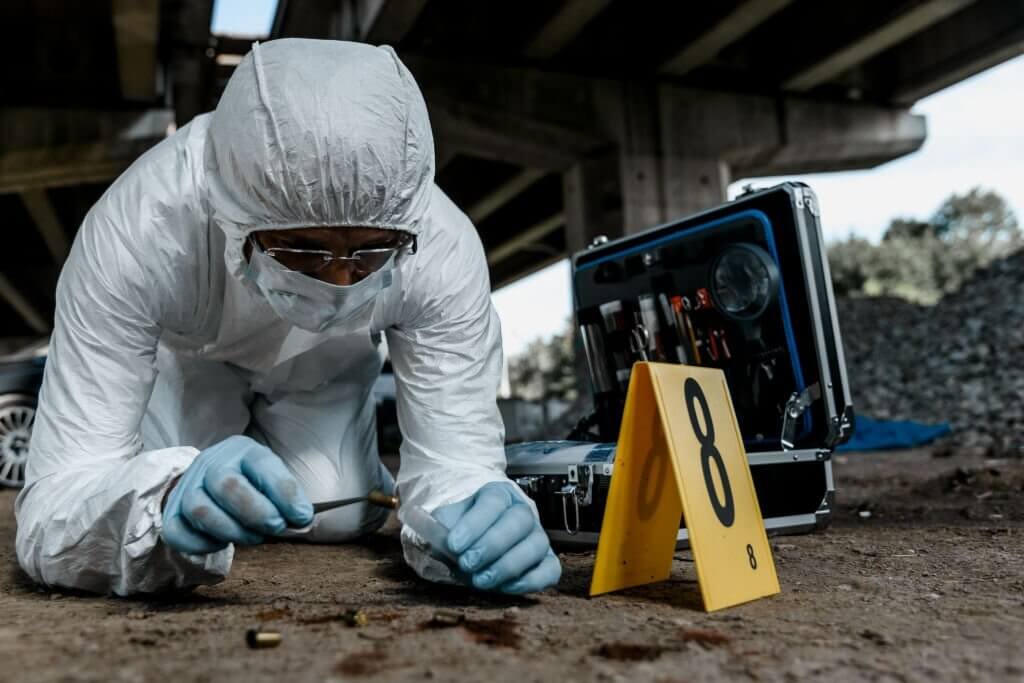
News and Blogs
The Science of Detection in Forensic Drug Testing and Specimen Collection Methods

Forensic drug testing plays an absolutely essential role in the captivating world of crime-solving, ensuring that justice prevails like a superhero swooping in to save the day! It's fueled by ingenious scientific breakthroughs, which employ a medley of detection methods that could make even Sherlock Holmes green with envy. So, dear reader, buckle up and get ready for an exhilarating ride through this article, as we dive into the nitty-gritty of forensic drug testing, marvel at the cleverness behind detection methods, and most importantly, have a blast exploring the fascinating purpose of this enthralling write-up!
I. Principles of Forensic Drug Testing
A. Purpose of drug testing
Criminal investigations, workplace testing, and sports anti-doping are like the three musketeers of our modern-day society, each fighting their own battles to ensure fairness and justice! Picture a team of detectives unraveling mind-bending mysteries, tracking down criminals like a game of high-stakes hide-and-seek. Meanwhile, workplace testing swoops in like a vigilant guardian, ensuring that employees stay sharp, focused, and, most importantly, safe while conquering their daily tasks. Finally, our sports heroes leap into action, thanks to the watchful eye of anti-doping agencies, making sure that every triumphant victory is earned through sheer determination and honest effort. Together, these three forces strive to create a world that's equal parts thrilling and honorable, and we're here to cheer them on!
B. Types of drug tests
Immunoassays, chromatographic techniques, and mass spectrometry are three analytical powerhouses that have revolutionized our understanding of molecular interactions, playing a crucial role in fields such as forensics, pharmaceuticals, and environmental monitoring. Immunoassays leverage the highly specific binding interactions between antigens and antibodies to detect and quantify target molecules, providing valuable insights into complex biological systems.
Chromatographic techniques, on the other hand, harness the differential affinities of compounds in a mixture to separate and analyze them, unveiling hidden connections and patterns.
Mass spectrometry takes it a step further, using advanced instrumentation to determine the mass-to-charge ratios of molecules, thereby allowing for the identification and quantification of compounds with remarkable precision. This powerful technique has become indispensable for elucidating the structures and functions of various biomolecules, contributing significantly to fields like proteomics and metabolomics. By working in tandem, immunoassays, chromatographic techniques, and mass spectrometry have enabled researchers to delve deeper into the intricacies of chemical and biological processes, unlocking a wealth of knowledge that has shaped our understanding of the world at the molecular level. These methods continue to push the boundaries of analytical science, paving the way for innovative solutions to some of the most pressing challenges facing humanity today.

II. Specimen Collection Methods
A. Biological samples
In the article, we shed light on the intricacies of various biological specimens used in forensic drug testing, each with its own set of advantages and limitations.
Urine, the most commonly used matrix, offers a non-invasive collection method and a wide detection window, making it a popular choice for routine screening.
Blood, on the other hand, provides a more accurate snapshot of an individual's recent drug use, but its invasive nature and shorter detection window may limit its applicability.
Saliva is gaining traction as a less invasive alternative to blood, allowing for the detection of drugs in real-time with minimal discomfort. Hair analysis offers the unique advantage of a much longer detection window, potentially revealing a person's drug use history over an extended period.
Lastly, sweat, while less commonly used, provides a continuous and non-invasive means of monitoring drug use through the application of sweat patches. By examining the strengths and weaknesses of these different matrices, the article offers valuable insights into the complex world of forensic drug testing and the ongoing pursuit of more accurate and reliable methods in the field.
B. Advantages and disadvantages of each sample type
In the realm of forensic drug testing and specimen collection methods, four crucial factors are paramount in determining the efficacy and reliability of a technique: sensitivity, detection window, non-invasiveness, and susceptibility to tampering.
Sensitivity refers to the ability of a test to accurately identify the presence of a substance, even in minute concentrations, ensuring that even trace amounts can be detected for a comprehensive analysis.
The detection window, on the other hand, concerns the time frame during which the substance remains detectable in the sample, providing crucial information on the recency of drug use.
Non-invasiveness is an important consideration in the collection process, as it minimizes discomfort and preserves the integrity of the sample. Methods that are less intrusive, such as saliva or hair tests, are generally more acceptable to those being tested and have fewer ethical concerns compared to invasive procedures like blood tests.
Lastly, susceptibility to tampering must be considered to ensure the authenticity of the sample and the validity of the test results. Implementing rigorous chain-of-custody protocols and utilizing tamper-evident containers can minimize the risk of sample adulteration or substitution, ultimately bolstering the integrity of forensic drug testing.
C. Proper handling and storage procedures
In the fascinating world of forensic drug testing and specimen collection methods, proper handling and storage procedures are the unsung heroes that keep the accuracy and integrity of test results in check. Imagine a diligent detective, stealthily navigating the treacherous terrain of contamination, degradation, and loss of analytes. The use of tamper-evident containers is akin to a secret agent's briefcase, designed to protect the precious samples from meddling hands. As these containers embark on their journey, they must endure the challenges of temperature control, humidity levels, and storage duration—all while maintaining the stability of the substances within. The power of proper documentation and labeling cannot be underestimated, as they serve as the faithful sidekicks ensuring a robust chain-of-custody process. In the thrilling adventure that is forensic drug testing, meticulous handling and storage procedures are the unyielding guardians of reliability and admissibility, playing a vital role in bringing truth and justice to the forefront.

III. Analytical Techniques in Drug Detection
A. Immunoassays
A variety of analytical techniques offer unique advantages and capabilities. Among these, enzyme-linked immunosorbent assay (ELISA), radioimmunoassay (RIA), and lateral flow immunoassays are particularly noteworthy.
ELISA is a popular and versatile method that relies on enzyme-labeled antibodies to detect and quantify target substances, providing high sensitivity, specificity, and a wide dynamic range.
RIA, an earlier developed immunoassay, employs radioactively labeled antigens or antibodies as tracers, and although it offers exceptional sensitivity, concerns about the handling and disposal of radioactive materials have led to a decline in its use.
Lateral flow immunoassays, on the other hand, have gained prominence due to their rapid, user-friendly format and suitability for point-of-care testing. Commonly recognized in the form of pregnancy tests, these assays utilize a combination of antibodies and nanoparticles to generate visually interpretable results.
B. Chromatographic techniques
Chromatographic techniques such as gas chromatography (GC), liquid chromatography (LC), and thin layer chromatography (TLC) play a vital role in the separation, identification, and quantification of compounds.
Gas chromatography is a powerful analytical method that employs an inert gaseous mobile phase to separate volatile compounds based on their affinity for the stationary phase. Coupled with sensitive detectors such as mass spectrometry (MS), GC provides high-resolution separation and accurate identification of target analytes.
Liquid chromatography, on the other hand, uses a liquid mobile phase and is particularly advantageous for the analysis of non-volatile and thermally labile compounds. High-performance liquid chromatography (HPLC) and ultra-performance liquid chromatography (UPLC) are advanced LC techniques that offer enhanced sensitivity, resolution, and speed.
Thin layer chromatography is a relatively simple, cost-effective technique that utilizes a solid stationary phase coated on a glass or plastic support. While TLC's resolution and sensitivity may be lower compared to GC and LC, it remains a valuable tool for preliminary screening and qualitative analysis.
C. Mass spectrometry
In the intricate landscape of forensic drug testing, mass spectrometry (MS) techniques stand as pillars of innovation and precision. Tandem mass spectrometry (MS/MS), time-of-flight mass spectrometry (TOF-MS), and matrix-assisted laser desorption/ionization mass spectrometry (MALDI-MS) each bring unique capabilities to the analytical process.
MS/MS is a powerful technique in which two or more mass analyzers are coupled sequentially, enabling the fragmentation and further analysis of selected ions. This results in enhanced specificity, sensitivity, and the ability to elucidate complex structures, making MS/MS invaluable for forensic applications.
TOF-MS, on the other hand, distinguishes ions based on their time-of-flight through the mass analyzer. This method offers exceptional mass accuracy, resolution, and a wide mass range, facilitating the rapid identification of unknown compounds.
MALDI-MS is a versatile technique that employs a matrix compound and laser desorption/ionization process to analyze a broad spectrum of analytes, including large biomolecules that are difficult to ionize by other methods. Its high throughput and minimal sample preparation requirements make it a valuable tool for screening and profiling applications.

IV. Ensuring Accuracy and Reliability
A. Quality control measures
Quality control measures are indispensable in the science, ensuring accuracy, reliability, and reproducibility of results. Internal standards, external standards, and proficiency testing each contribute to the establishment and maintenance of high-quality analytical procedures.
Internal standards are reference compounds that are added to the sample prior to analysis, possessing similar chemical properties to the target analytes. They serve as a benchmark to correct for variations in sample preparation, instrument performance, and signal response, ultimately enhancing the accuracy and precision of the measurements.
External standards, on the other hand, are separate, well-characterized reference materials used to construct calibration curves and determine the concentration of the target analytes in the samples. Regular use of external standards ensures the linearity and sensitivity of the analytical method, as well as the instrument's ongoing performance.
Proficiency testing is a crucial aspect of quality assurance, in which laboratories analyze blind samples provided by external organizations to assess the accuracy and precision of their testing methods. This inter-laboratory comparison promotes continuous improvement, identifies areas of concern, and fosters confidence in the laboratory's analytical capabilities.
B. Adhering to established guidelines
Adhering to established guidelines is of paramount importance, as it ensures accuracy, credibility, and ethical practices. Organizations such as the Scientific Working Group for Forensic Toxicology (SWGTOX), the World Anti-Doping Agency (WADA), and the Substance Abuse and Mental Health Services Administration (SAMHSA) play crucial roles in shaping and maintaining these guidelines.
SWGTOX provides best practice recommendations and quality assurance standards for forensic toxicology laboratories, promoting excellence and consistency in analytical methods and reporting.
WADA is a global authority in the fight against doping in sports, establishing the World Anti-Doping Code and overseeing rigorous accreditation and proficiency testing programs for anti-doping laboratories. Their guidelines and standards ensure fair competition and the integrity of drug testing in the sporting world.
SAMHSA, a U.S. federal agency, develops and enforces the Mandatory Guidelines for Federal Workplace Drug Testing Programs, setting stringent requirements for specimen collection, laboratory analysis, and result reporting. Adherence to these guidelines is essential for maintaining the validity and legal defensibility of drug testing procedures.

V. Challenges and Future Developments
Picture the world of forensic drug testing as a fast-paced, thrilling detective story, with emerging drugs constantly introducing new challenges and pushing the boundaries of future developments. These elusive substances are like mastermind criminals, always one step ahead, evading capture by disguising themselves with new chemical structures.
Our forensic heroes must stay vigilant, developing cutting-edge techniques and adapting to the ever-changing landscape of drug abuse. They are like super-sleuths, tirelessly working to crack the code of these designer drugs, employing advanced analytical tools and innovative approaches to bring these rogue substances to light. New detection methods and alternative matrices continue to emerge, broadening the horizons for forensic drug testing and opening up exciting opportunities for future developments.
Imagine a world where rapid, ultra-sensitive tests can identify and quantify even the most novel compounds in real-time, revolutionizing the way we tackle the ever-growing challenges posed by emerging drugs. It's an ongoing battle of wits and innovation, a gripping adventure in the pursuit of truth and justice, and a testament to the resilience and determination of forensic scientists who strive to stay one step ahead in this captivating game of cat and mouse.
Want to learn more about saliva collection kits?
Seeking steadfast, user-friendly saliva collectors to cater to your forensic endeavors? Behold, the marvel of Mantacc! Crafted to pinpoint the constituents of salivary samples, our kits are indispensable allies in forensic biology, toxicology, and drug surveillance. Mantacc's kits assure precise outcomes in your investigative quests, and their simplicity welcomes the dexterity of seasoned professionals and novices alike. Banish inferior collectors - embrace the excellence and dependability of Mantacc. Procure your saliva collection kits posthaste, and witness the distinction firsthand!
Find products: saliva collection kits, forensic diagnostics
Related Posts
Everything You Need To Know About Cervical Specimen Collection
Specimen Collection and the Ongoing Battle Against Tuberculosis in Indigenous Populations
A Comprehensive Guide to Specimen Collection for Gastrointestinal Pathogen Detection
Nasopharyngeal Swab vs Oropharyngeal Swab: Which is Better In Specimen Collection?
What is An Effective Specimen Collection and Transport System?
The Forensic Swab: Championing Effective DNA Evidence Collection






